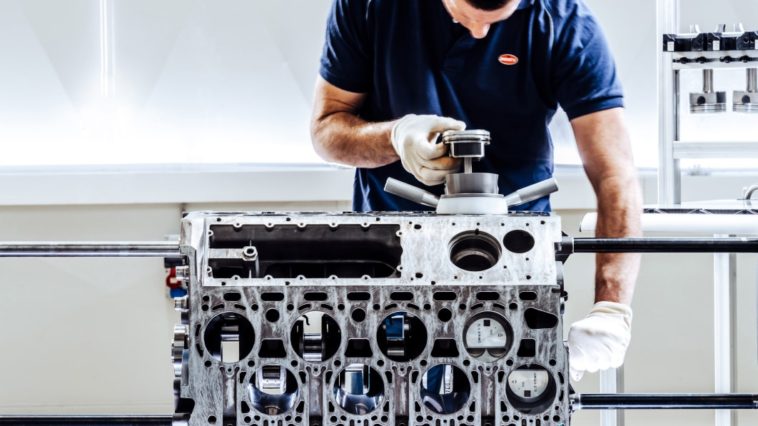As the tip of the Chiron’s manufacturing run nears, Bugatti is having a look again on the W16 engine that has powered its automobiles because it returned to the scene almost 20 years in the past. The engine is comparatively compact, vastly highly effective, and it has helped the agency set a number of world data.
Former Volkswagen boss Ferdinand Karl Piëch knew that efficiently reviving Bugatti required constructing a automotive that stood out from every little thing else on the street on the time. He initially deliberate to energy the then-upcoming Veyron with an 18-cylinder engine and sketched it out on an envelope whereas using on a high-speed practice from Tokyo to Osaka in Japan in 1997. His idea later turned a 16-cylinder engine, however dropping a pair of cylinders did not make the unit simpler to develop. Bugatti engineers began from scratch so as to make the W16 a actuality.
“We needed to have interaction in fundamental growth for each part; each car half needed to be constructed anew and examined — even the engine take a look at bench. The one factor we did not change was the pencils we used for drawing,” mentioned former Bugatti head of technical growth Gregor Gries. The preliminary objective was to launch the Veyron with over 1,000 horsepower, and even some insiders doubted that this may very well be achieved.
Bugatti pulled it off: The Veyron entered manufacturing in 2005 with a quad-turbocharged, 8.0-liter W16 engine rated at 1,000 horsepower and 922 pound-feet of torque. Horsepower elevated to 1,200 within the Veyron Tremendous Sport, and the Chiron inaugurated a brand new model of the engine rated at 1,500 horsepower thanks partially to larger turbos, although the Chiron Tremendous Sport provides a 1,600-horsepower output.
Engineers confronted a number of important challenges throughout the Veyron’s growth course of. Getting the W16 to make 1,000 horsepower wasn’t one; it broke the symbolic barrier the primary time it was placed on a take a look at bench in 2001. Holding its temperature in verify required designing an enormous cooling system that takes over 10 gallons of coolant and putting in a titanium exhaust system. With the engine able to go, Bugatti turned its consideration to making a automotive able to dealing with 1,000 horsepower, each when it comes to consolation and when it comes to aerodynamics.
“Again then, there was no literature or empirical knowledge for manufacturing engines with greater than 12 cylinders or for manufacturing automobiles that would go sooner than 217 mph,” mentioned Karl-Heinz Neumann, Volkswagen’s former head of engine growth. “One factor proved to be a selected headache: the automotive needed to keep grounded, its energy needed to keep on the street, which is not straightforward at these speeds.”
Unsurprisingly, constructing the Chiron’s W16 engine is a meticulous and time-consuming course of. Bugatti explains that the engine is made in a particular room throughout the plant that Volkswagen operates in Salzgitter, Germany. Two technicians spend a minimum of six days assembling the three,712 particular person components that make up the engine. When it is accomplished, the W16 is shipped to the Bugatti plant in Molsheim, France.
What’s subsequent? Your guess is pretty much as good as ours. Bugatti notes that the W16 is “the final of its sort,” which suggests (however does not affirm) that the tip is close to for the engine. The corporate is now below the identical roof as Croatia-based Rimac, however that does not imply the Chiron’s successor will go electrical. “[The car] can be closely electrified, however we’ll have a really engaging combustion engine,” mentioned Mate Rimac in March 2022.


